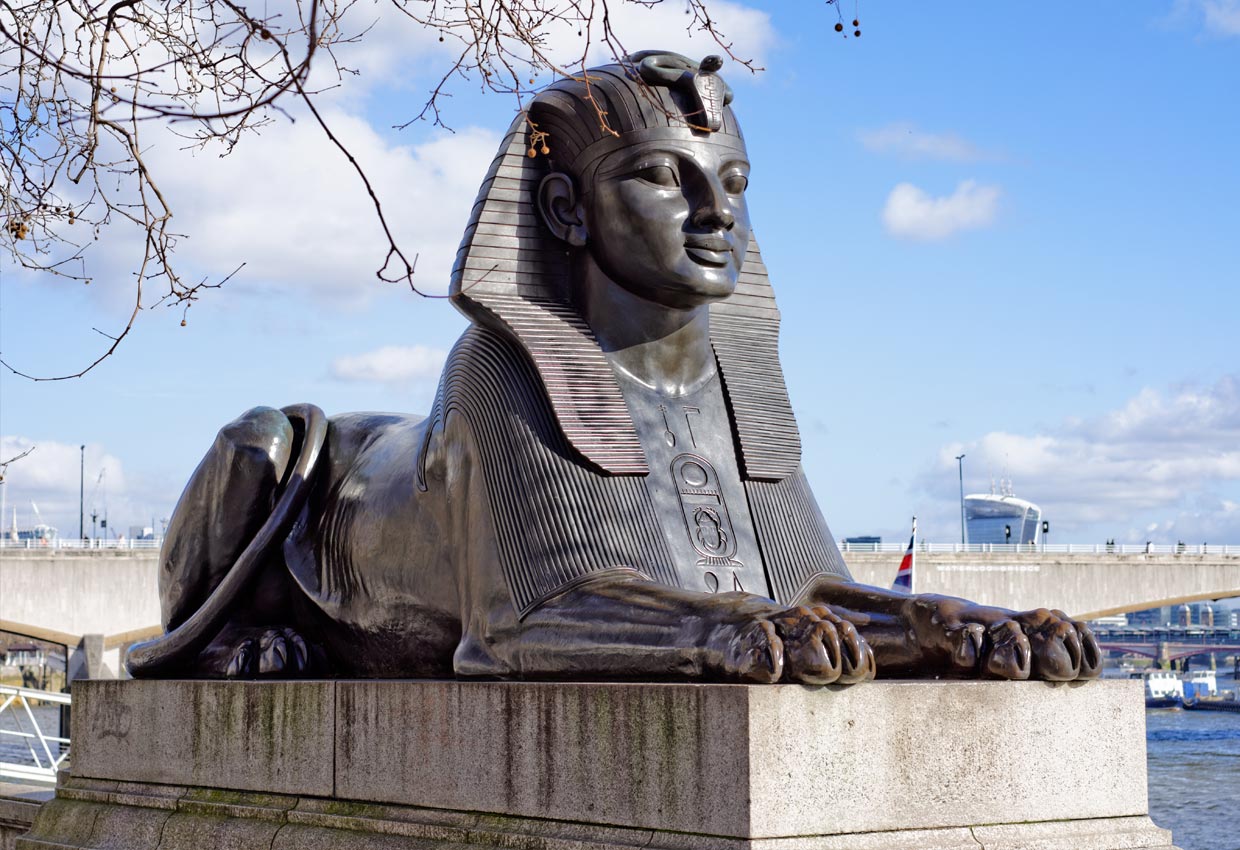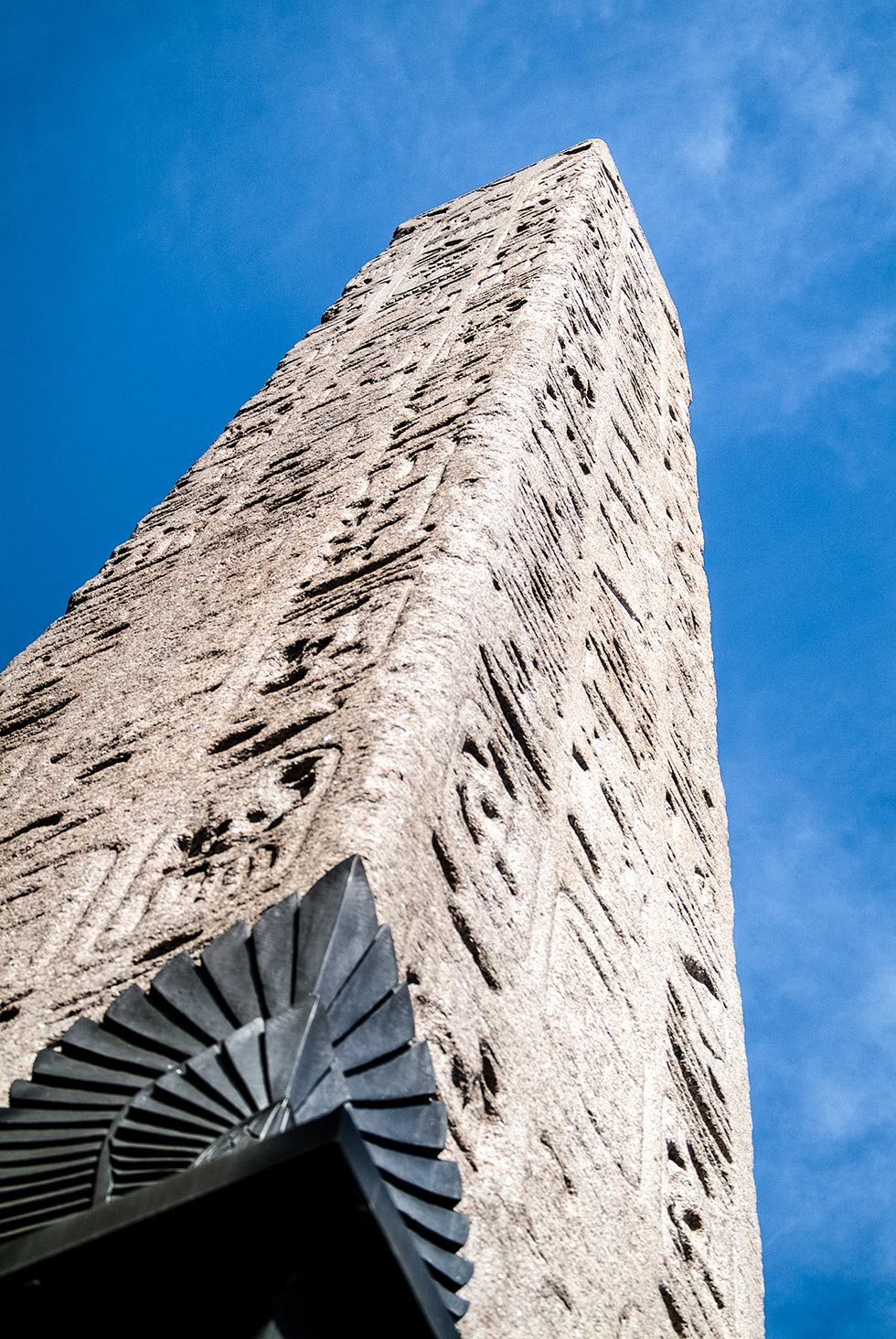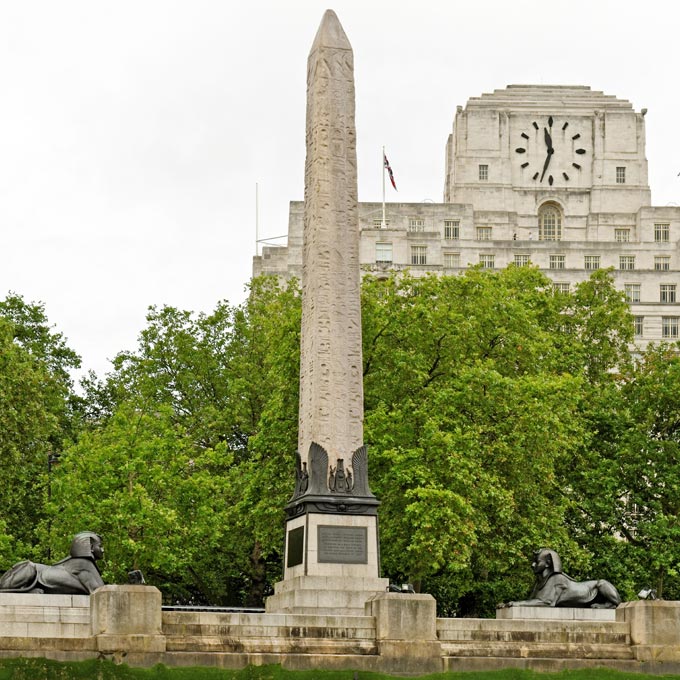In terms of Egyptian history this atrefact is the real deal. Now perched on the Thames Embankment near Embankment station, it began life almost 3,500 years ago in 1460BC and was made for Pharaoh Totmes III.
None of which yet explains why this huge item, hewn from stone in Alexandria almost 1,500 years before the birth of Christ, should end up in London in close proximity to the ubiquitous Starbucks, budget gyms and Wetherspoons pubs.
In a word – Napoleon. The first French Emperor, military general and Empire builder.
He might have been tiny but his ambitions and warring achievements were considerable. His empire eventually stretched from Spain to the Russian border. But the British under the command of the Duke of Wellington finally put a stop to such things by handing him a beating at the Battle of Waterloo.

Sphinx statue near Cleopatra’s Needle.
Stock Photograph.
Adding to the triumphalism were victories in the Battle of the Nile and Battle of Alexandria.
These monumental battles and victories would be marked by a huge monument. Something that is not ours, something enormous, from somewhere else, somehow…
Such was the way of things then.
But in an act of gratitude, the Viceroy of Egypt offered the giant obelisk. Nelson and British forces had defeated Napoleon’s invasion forces in the Battle of the Nile and the Egyptians felt a massive ancient edifice, almost impossible to transport was in order…
So in 1878, with 15,000 committed to the cause, the process began. A specially designed container ship – The Cleopatra – had to be constructed which was a significant feat of engineering in itself. The 93ft long 15ft wide cylindrical iron container vessel contained 10 watertight compartments, cabin, bilge keels and bridge. It would house the huge stone
As it turned out, getting the needle on board and then buoyant was the least of their problems. In October 1877 just off the West coast of France, horrendous conditions threatened everything. Napoleon controlled vast armies with some skill, now it appeared he might have some influence over the seas too…
The towing steamship The Olga sent six volunteers to fetch Cleopatra’s imperilled crew. They never made it, the sea devoured them and all six died.
The Olga eventually managed to get alongside The Cleopatra and rescue her crew but the decision was made to cut the ship free and leave her and her precious cargo to the mercy of the seas. The expedition appeared to be nothing more than an expensive and tragic folly.
Conditions relented and the crewless iron ‘cigar case’ and precious cargo managed to bob its way to the northern coast of Spain. From there it was towed to Britain by another steamship.
A vast Thameside welcome greeted it including artillery salutes. And in September 1878 it was erected where it stands to this day.
A heroine in all of this was The Cleopatra herself, a supreme feat of maritime engineering. So what became of her?
Sent for scrap as soon as her job was done!


The dual sphinxes added later at the foot of the Needle are either an appropriate addition or a hamfisted and unnecessary attempt to Egypt-
So when you stand next to Cleopatra’s Needle, look at it steepling skywards, pointing to infinity. Remember rightful ‘owner’ Pharaoh Totmes. Consider the unlikely role of Napoleon Bonaparte. Spare a thought for those six tragic volunteer sailors. Marvel at the engineering feat of the Dixon Brothers who designed the floating iron cylinder that eventually brought the needle to London. And gaze on something that looks as solid as ever despite pre-dating the birth of Christ by 1500 years…

